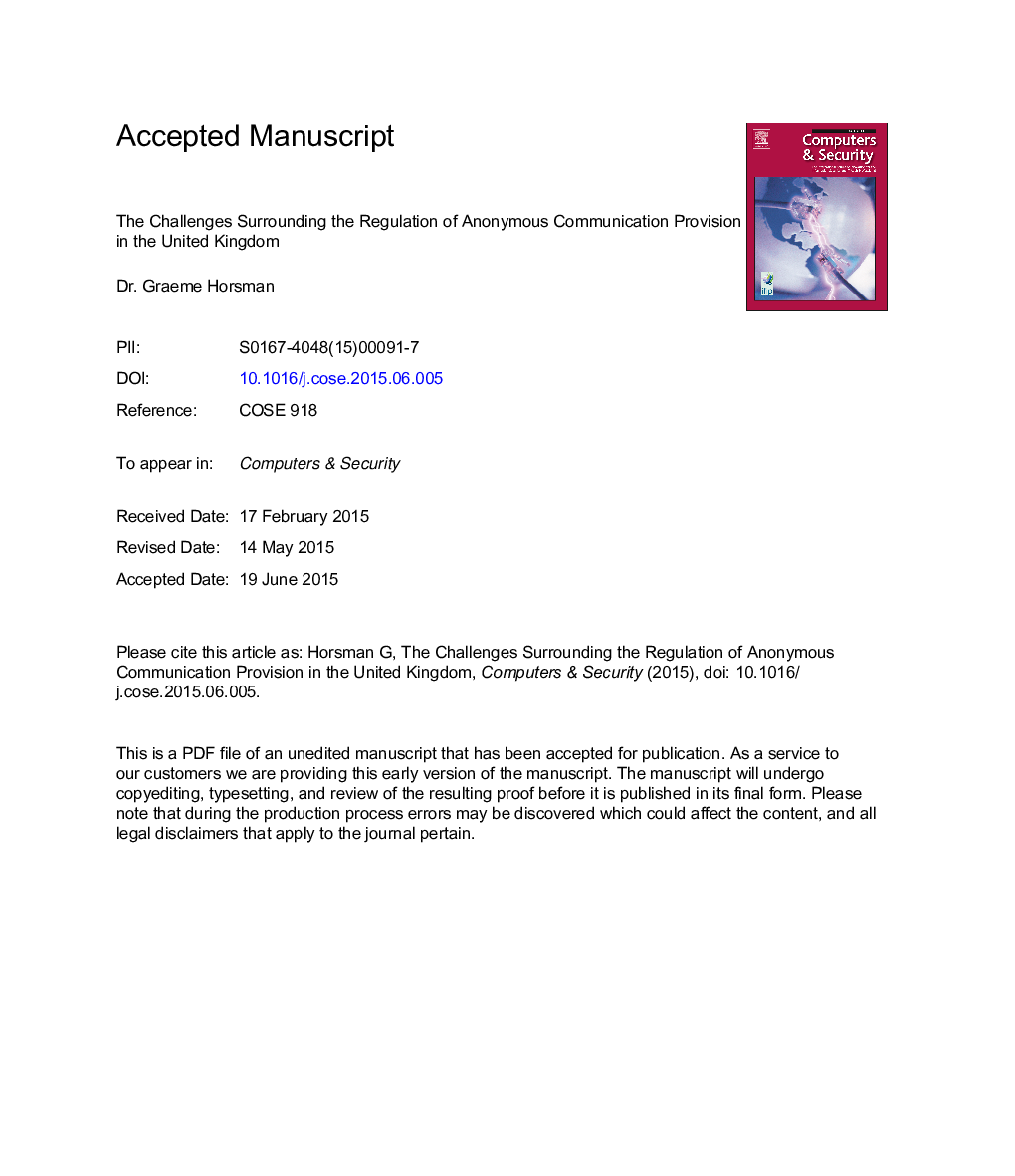| کد مقاله | کد نشریه | سال انتشار | مقاله انگلیسی | نسخه تمام متن |
|---|---|---|---|---|
| 6884231 | 695589 | 2016 | 25 صفحه PDF | دانلود رایگان |
عنوان انگلیسی مقاله ISI
The challenges surrounding the regulation of anonymous communication provision in the United Kingdom
ترجمه فارسی عنوان
چالش های مربوط به تنظیم مقررات ارتباط ناشناس در انگلستان
دانلود مقاله + سفارش ترجمه
دانلود مقاله ISI انگلیسی
رایگان برای ایرانیان
کلمات کلیدی
ناشناس، ییک یوک، نگهداری داده ها، اجرای قانون، تحقیق و بررسی، ارتباطات، جرم پزشکی دیجیتال،
موضوعات مرتبط
مهندسی و علوم پایه
مهندسی کامپیوتر
شبکه های کامپیوتری و ارتباطات
چکیده انگلیسی
This article presents an analysis of the regulatory challenges posed by anonymous communication applications in the United Kingdom, which are in widespread use largely due to the online privacy sought by individuals. However, protecting individuals through the use of anonymous applications presents a serious problem in terms of offender identification where malicious use has occurred. Although numerous anonymous communication applications exist, due to the volume of media criticism attracted, indicating its role in a rise in acts of cyberbullying in the United States of America; this article focuses on the anonymous bulletin board Yik Yak. To demonstrate the limitations present when attempting to determine an offender's identity, a digital forensic analysis was carried out on an iPhone handset used for communicating via Yik Yak and the key findings highlighted. Since Yik Yak is growing in popularity, the article proceeds to examine the challenges for regulating use in University campus environments in England and Wales given their status as a 'private communications service providers', remaining outside the confines of the Data Retention and Investigatory Powers Act 2014. A discussion of hypothetical university campus network infrastructures is presented in order to identify the challenge of identifying malicious Yik Yak users, concluding that for anonymous communication applications such as Yik Yak, reliance should be placed upon sufficient data retention periods in order to assist the investigation of criminal behaviour and offender identification.
ناشر
Database: Elsevier - ScienceDirect (ساینس دایرکت)
Journal: Computers & Security - Volume 56, February 2016, Pages 151-162
Journal: Computers & Security - Volume 56, February 2016, Pages 151-162
نویسندگان
Graeme Horsman,
